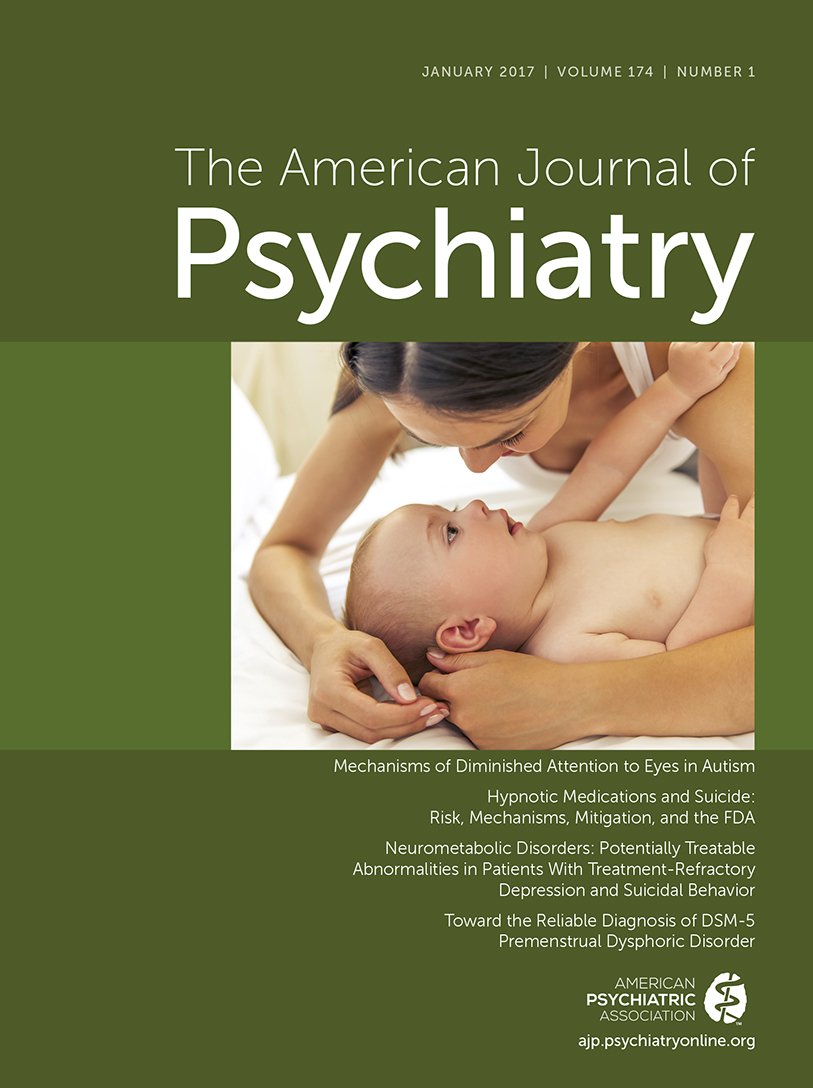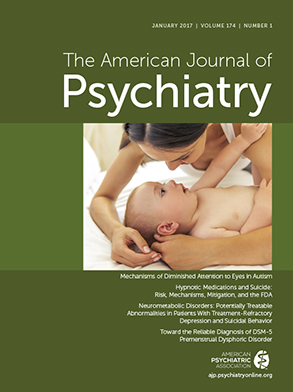T
o the E
ditor: We read with interest the article by Blanco et al. (
1), titled, “Pain as a Predictor of Opioid Use Disorder in a Nationally Representative Sample,” published in the December 2016 issue of the
Journal. The authors examined the relationship between moderate and more severe pain and prescription opioid use disorders in the noninstitutionalized U.S. population. The authors found that pain and prescription opioid use disorders were significantly associated with one another at baseline and at 3-year follow-up. The path for pain interference was associated with a 41% relative increase in the risk of developing a prescription opioid use disorder. Blanco and colleagues conclude that painful conditions contribute to the risk of prescription opioid use disorder (
1).
However, it appears Blanco et al. might be confused with the terms “nonmedical use of prescription opioids” and “opioid use disorder.” For instance, in a section of the introduction, Blanco et al. stated: “Several cross-sectional studies have indicated that pain is associated with an increased risk of prescription opioid use disorders, and concerns have been raised that individuals with opioid use disorders may develop abnormal pain sensitivity or hyperalgesia.” The authors include several citations in this sentence; their reference 10 is an article by Fischer and colleagues (
2), in which the prevalence of mental health and pain symptoms in a general population sample is reported as the “nonmedical use of prescription opioids” rather than as “prescription opioid use disorder.” Furthermore, their reference 11 is an article by Chu et al. (
3), titled, “Opioid-Induced Hyperalgesia in Humans: Molecular Mechanisms and Clinical Considerations,” where no opinion is expressed to the extent that “individuals with opioid use disorders may develop abnormal pain sensitivity or hyperalgesia” (
1). Chu and colleagues did not mention “nonmedical use of prescription opioids” or “opioid use disorder.”
The nomenclature related to addiction is often inconsistent, inaccurate, and confusing, partially reflecting the diverse perspectives of those working in the related fields of health care, law enforcement, regulatory agencies, and reimbursement and payer organizations. Changes over time in the fundamental understanding of addiction have also contributed to the persistent misuse of obsolete terminology (
4).
Definitions and use of terms describing opioid analgesic misuse, abuse, and addiction have also changed over time, and their current correct use is inconsistent not only among health care providers but also among federal agencies reporting epidemiological data, such as the prevalence of opioid analgesic misuse, abuse, or addiction. Misuse and misunderstanding of these concepts and their correct definitions have resulted in misinformation and have led to impediments in proper patient care (
5).
Prior to the release of DSM-5 in 2013, previous versions eschewed the term “addiction” in favor of “substance dependence,” with a separate diagnostic entity of “substance abuse” representing a lower-grade, less severe version of substance dependence (
5). In addition, in earlier DSM versions, physiological dependence, manifesting as substance tolerance and withdrawal, was considered a diagnostic criterion of substance dependence.
Clearly, the diagnosis of dependence has caused much confusion. Most people link dependence with addiction when in fact dependence can be a normal body response to a substance (
6). The result has been the perpetuation of patient and health care professional confusion between physical and psychological dependence and the belief that tolerance and withdrawal mean addiction.
We applaud the authors for their work. However, based on these very important points, we wonder whether the present investigation by Blanco et al. might be compromised by the use of data collected a decade ago, using the Alcohol Use Disorder and Associated Disabilities Interview Schedule–DSM-IV version.

